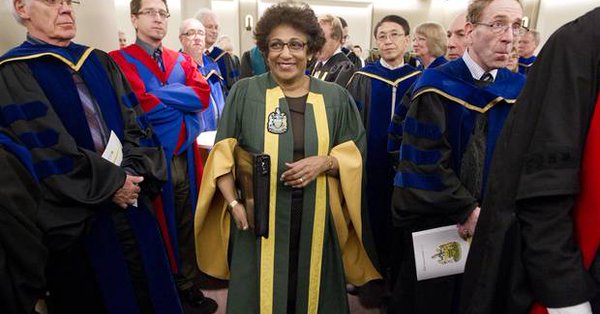Universities need to wake up and smell the sunshine

This op-ed was published in The Globe and Mail on Saturday, July 22, 2017.
Sunshine lists are an eye-opening exercise in understanding the use of tax dollars. The provincial lists show which government employees are paid more than $100,000 annually, give or take. They’re an important democratic tool. Without knowing how their money is spent, taxpayers cannot judge whether their government is delivering good value.
Despite struggling through a recession, Alberta’s sunshine list has revealed that the salaries of top university administrators are not only out-of-line with the rest of the country, but also include massive financial perks with no benefit for taxpayers or students.
Past University of Alberta president Indira Samarasekera made headlines for being the university’s third-highest earner in 2016, despite not living or working in Alberta that year. The reason for Samarasekera’s surprising spot on the sunshine list is her “administrative leave” — a perk that should be noted by all Canadians.
Samarasekera received $578,315 on her way out of office. Yet that year, Samarasekera is listed as an unpaid scholar in residence at the University of British Columbia. She was not contractually required to spend any time in Alberta while being paid administrative leave.
Administrative leave payments are a common perk for university presidents and vice-presidents across Canada. Past University of Alberta president Rod Fraser left with a similar payout in hand. But they’re absolutely not justified. While serving as president, Samarasekera was paid over $1 million in 2012-13 and 2013-14. It’s hard to argue that someone needs a golden handshake nearly 12 times the average Canadian salary to cushion the blow on their way out of a seven-figure job.
Nearly $17 billion in public money is spent on universities and colleges every year, with the vast majority of that money coming from provincial governments. However, those who should be most outraged by these lavish payouts are the students living off Mr. Noodle while being charged more tuition.
Administrative leave payments are similar to the transition allowances collected by many politicians on their way out of office, allegedly to help them transition back into normal life (or in this case, academia).
In the real world, almost no one is paid by their employer for not working. It was absurd to Albertans that members of the legislature were receiving transition allowances, letting some MLAs walk away with over $1 million, whether they quit or were fired by the voters. Commendably, former Alberta premier Alison Redford ended the practice in 2012, delivering a reality check to the province’s politicians.
Samarasekera has undoubtedly done valuable work. University presidents are an esteemed cohort, but they are still paid by the public purse. Every tax dollar spent is a choice – it can only be spent on one item. A million-dollar salary and a nearly $600,000 golden handshake is money that won’t be spent on research or hiring new teachers.
Compensation represents about 50 cents of every dollar spent by the Alberta government, so salaries and perks matter. Alberta government employee costs tend to be higher than the national average. For years, oil revenues flowed, buying politicians’ labour peace and ensuring rich pay days for executives, including those in the province’s ivory towers. According to a 2012 University of Calgary study, 95 per cent of the increase in provincial revenues between 2000 to 2010 went to paying government employees. The total wage bill was just over 25 per cent of total government spending in 2000. If there’s any confusion as to how Alberta is running deficits, there’s no need to search any further.
Times have changed, and securing long-term budget sustainability means cutting back. Though the Alberta government is not doing nearly enough to rein in compensation, they’ve cracked down somewhat on executive pay. Recently, the government committed to limit the pay and perks of university executives.
They could start by bringing compensation levels not just down to the national average – but dropping them further. Over $1 million in annual compensation is alarmingly out of touch. Scaling back compensation means renegotiating contracts – no easy feat, but doable with the will and wherewithal.
Alberta’s NDP government should take a page from Redford’s book and eliminate administrative leave pay for university administrators altogether. Highly-paid administrators don’t need a golden cushion to land on when they depart their posts.
Eye-popping salaries and perks on the public dime are unacceptable at any time, but when finances are tight, the need for restraint is brought to light. In this case, sunshine has again proven to be the best disinfectant.
Paige MacPherson is Alberta Director of the Canadian Taxpayers Federation.